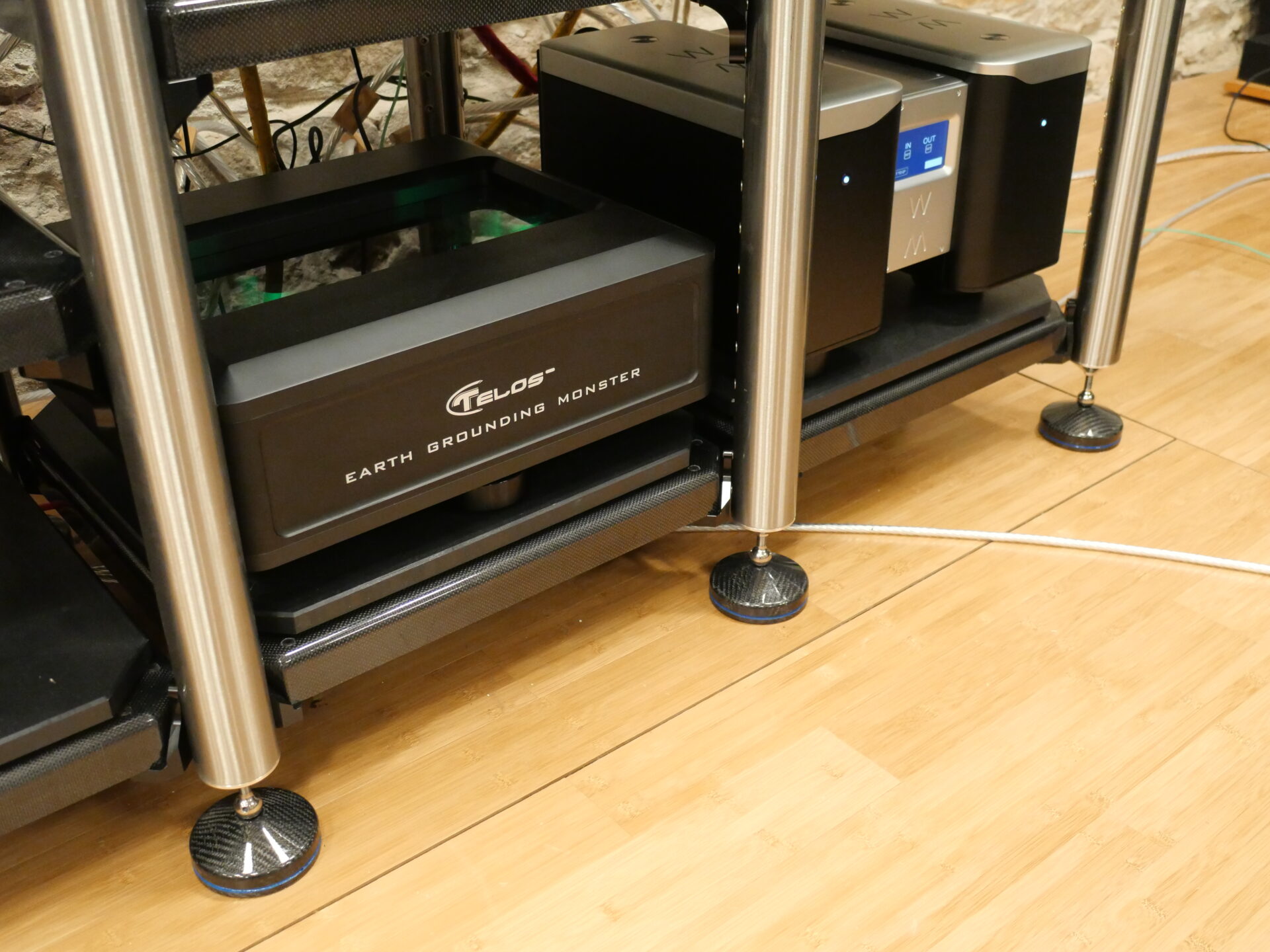
The final configuration of the Monza rack consists of three bays, two with three, widely spaced shelves for the Wadax and one with four, more closely spaced shelves for CH or similar ‘more normal’ sized components. The six-shelf RXR stood on 14 Apex cones – which is an awful lot of isolation/dissipation. With only eight legs/cones, you might think that the Monza would be a step back in this regard, but moving up to the larger Apex XLs, which I’m already using under the Monaco rack, more than made up the difference. The three-bay, ten-shelf Monza rack is super-rigid and easy to work with. Best of all, it’s completely stable. I check the level of the rack’s frame on a regular basis (force of habit after the RXR) and it has stood rock solid since installation. You need to be careful positioning (and levelling) the equipment on each shelf due to the polymer rings that isolate each one, but that aside, the rack is a joy to work with.
I generally use the Monaco Classic rack for the Monaco turntable and P1/X1 or more recently, the P10 phono-stage. Even if I’m using the full Wadax front-end and a two-box line-stage (the L10, L1/X1, VTL TL-7.5 III or Connoisseur 4.2 LE), that still leaves me with three spare shelves for test or accessory pieces. Which is just as well, as the extremely effective Telos Grounding Monster (https://gy8.eu/review/a-riddle-wrapped-in-mystery-inside-an-enigma/) has become a semi-permanent resident on one of them. This monstrous beast is both monstrously heavy and monstrously expensive – a pain to pack and an even bigger pain to ship: which probably helps explain why it is still here. I’m definitely not complaining! However, I have requested the smaller, more manageable and more affordable GNR V5.1 for comparison/consideration. I’m not expecting to match the Monster in performance terms, but if it can deliver a goodly proportion of the performance from a package that’s neater, easier to accommodate/manipulate and considerably cheaper too, it might just be both the sweet-spot in the Telos range and a permanent solution here.

At the same time as upgrading the main rack, I bit the bullet and committed to a quartet of Monza amp stands, meaning that now, the entire system, plus visiting pieces can be supported on Grand Prix Audio shelving and Apex footers, introducing a significant step forward in mechanical consistency. Only the VTL S-400 II is excluded, partly down to its shape, partly down to its massive weight: just getting it onto a platform is a serious struggle. I’ve always used the HRS Nimbus under the S-400 and I’m going to continue doing so.

Just as the Nimbus has stayed in place under the S-400, the RXR has found a new home in the Reading Room. Moving the frame upstairs was also the opportunity to break it down completely and rebuild it, treating all the treads with Copaslip and then tightening them to even torque settings. Rebuilding the rack upside down ensured a level plane across the top shelves/frames, as well as giving easy access to the fixings. So far, the rack also seems to be exhibiting greater consistency/stability – although that might just be down to the lower loading forces exerted by the (considerably) lighter equipment that I’m generally using in this system. But the installation of the HRS has also instigated another form of stability, offering a more permanent home for the key components in the Reading Room, a space that see more and a more rapid turn-over of equipment than the main Music Room. This ‘work-shop’ environment demands a high degree of flexibility when it comes to system composition, location and configuration. Previously, I have relied on the modular Blue Horizon PRS rack(s) to deliver that flexibility, but with such a constantly shifting basis, maintaining a consistent system-to-system state of tune has proved challenging at times.

